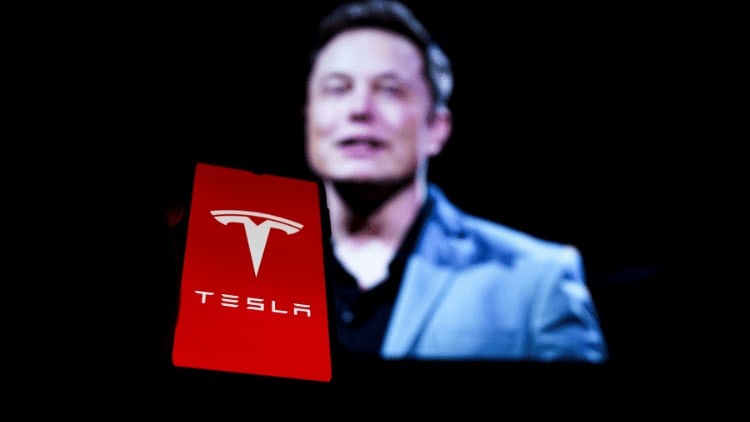Big Tech firms flagrantly disregard the implicit social contract—the time has come to curb their market power.

One of the defining economic challenges of our time is how to distribute the value generated by groundbreaking technologies, such as generative artificial intelligence and recent innovations in biomedicine and manufacturing, which rely on massive computing power. To improve living standards, the benefits of transformative technologies must be widely shared. So far, however, these benefits have been monopolised by a small cadre of technology billionaires.
The Tesla chief executive, Elon Musk, is a prime example. Most people recognise that Musk did not deserve the $56 billion in annual compensation the company’s board of directors attempted to give him in 2018, given Tesla’s relatively modest profits and years of losses. Nevertheless, the board argued that this enormous sum was necessary to incentivise Musk to remain at the company—an argument so baseless that a Delaware judge recently invalidated the board’s ‘unfathomable’ compensation package.
But Musk is hardly alone. Other technology behemoths, such as Alphabet (Google’s parent company), have similarly lavished their chief executives with hefty salaries and stock options under the guise of retaining top talent. In reality, though, the actual contribution of star executives is often unclear.
A classic 1991 study by the Nobel-laureate economists Bengt Holmström and Paul Milgrom suggests that incentive pay works only with simple tasks that have measurable outcomes and are executed by a single worker; in such cases, compensation can be directly linked to individual performance. By contrast, the multifaceted nature of chief executives’ roles makes it hard to evaluate their individual contributions. But given that the metrics for measuring their success, such as share prices, are shaped by the collective efforts of numerous employees and by chance, it could be argued that they should be the last to receive monetary incentives.
Adverse effects
Moreover, Big Tech companies’ huge profits reflect their market power, which they have achieved by offering users ‘free’ services such as search and email while harvesting their personal data and copyrighted material to train AI models. In the absence of competitive checks, the quality of these services has gradually deteriorated—a trend the author and technology activist Cory Doctorow has described as ‘enshittification’.
At the same time, the adverse effects of Big Tech’s business models, from rampant misinformation and deep fakes to clickbait, have become increasingly apparent. The emergence of generative AI has further fuelled concerns about tech giants’ market dominance, as writers, artists and other creative professionals find their livelihoods undermined by large language models that circumvent copyright-law restrictions with impunity.
It does not have to be this way. In a recent essay, the Massachusetts Institute of Technology economist David Autor argues that emerging AI technologies have the potential to complement the skills of human workers—particularly those, such as nurse practitioners, who typically do not receive incentive-based pay packages. Similarly, research by Autor’s MIT peers Erik Brynjolfsson, Danielle Li and Lindsey Raymond finds that AI significantly boosts the productivity of call-centre workers. Taken together, such studies suggest that generative AI could augment the work of creative freelancers instead of replacing them.
Digital public infrastructure
But systemic change requires more than individual efforts. The overwhelming power of Big Tech companies calls for government intervention to ensure that the value they create, as well as the value they extract in monopoly rents, is distributed fairly among workers and consumers. Although policy-makers in Europe and the United States have rightly focused on competition-enhancing measures, including by examining the impact of major technology firms on labour markets, these actions are not enough.
To curb the market power of Big Tech firms and ensure that new technologies benefit everyone, governments must invest in developing digital public infrastructure. The concept of an open-standards technology stack—consisting of digital identification, a payment system and a data-exchange platform—has gained traction in economic-development circles in recent years and such frameworks could streamline the provision of public goods.
But achieving this requires a change in mindset. Digital public infrastructure, typically viewed simply as a means to provide government services to individuals, has the potential to become a powerful platform for facilitating interactions among governments, businesses and citizens. Ideally, a publicly owned payment system could process transactions between firms and among individuals across different jurisdictions.
Moreover, the establishment of public digital infrastructure is crucial to implementing certain policy measures, such as the tax on digital advertising proposed by the Nobel-laureate economist Paul Romer. The revenues from such taxes could, for example, finance waste collection and recycling initiatives.
Effective mechanisms
A thriving market economy operates as a partnership between the government and the private sector. Under this arrangement, businesses are allowed to manage their own affairs, provided they comply with laws and regulations, pay corporate taxes and take in their employees’ taxes.
But Big Tech firms have undermined this implicit agreement by exploiting various legal loopholes to minimise their tax burdens, compromising the quality of their services and routinely violating copyright laws. The time has come to establish effective and necessary institutional mechanisms to ensure that potentially transformative technologies benefit everyone, not just a privileged few.
Republication forbidden—copyright Project Syndicate 2024, ‘Sharing the tech wealth’
Diane Coyle is professor of public policy at the University of Cambridge. She is the author, most recently, of Cogs and Monsters: What Economics Is, and What It Should Be (Princeton University Press, 2021).

